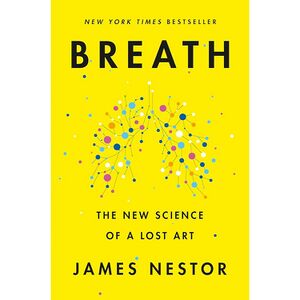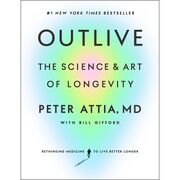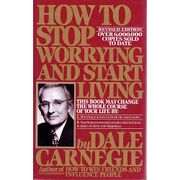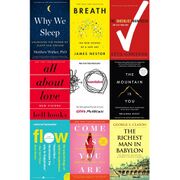Breath
🍎 Healthy brain food
"The missing pillar in health is breath. It all starts there."
— James Nestor, Breath (2020)
Introduction
| Breath | |
|---|---|
 | |
| Full title | Breath: The New Science of a Lost Art |
| Author | James Nestor |
| Language | English |
| Subject | Breathing; Respiration; Health |
| Genre | Nonfiction; Popular science |
| Publisher | Riverhead Books |
Publication date | 26 May 2020 |
| Publication place | United States |
| Media type | Print (hardcover); e-book; audiobook |
| Pages | 304 |
| ISBN | 978-0-7352-1361-6 |
| Goodreads rating | 4.1/5 (as of 6 November 2025) |
| Website | penguinrandomhouse.com |
📘 Breath: The New Science of a Lost Art is a popular science book by journalist James Nestor, published by Riverhead Books on 26 May 2020. [1] It argues that breathing habits—especially nasal versus mouth breathing and slower, lighter rhythms—shape sleep, cardiovascular, and mental health, weaving history, physiology, and self-experiments such as a Stanford trial alternating enforced mouth- and nose-breathing. [2] The book is structured in three parts and ten chapters (e.g., “Nose,” “Exhale,” “Slow,” “Less,” “Chew,” “Hold It”). [3] Reviewers describe the prose as an engaging reported narrative that blends travelogue with accessible science. [4][5] It became a New York Times bestseller and a Washington Post Notable Nonfiction Book of 2020, and—according to the publisher—has sold more than three million copies in 44 languages. [1][6]
Chapter summary
This outline follows the Riverhead hardcover edition (26 May 2020; ISBN 978-0-7352-1361-6).[1][7][3]
I – The experiment
🐒 1 – The Worst Breathers in the Animal Kingdom. In the basement of the University of Pennsylvania Museum of Archaeology and Anthropology, orthodontist Dr. Marianna Evans guides Nestor past rows of the Morton Collection, reading skull labels such as “Bedouin,” “Copt,” “Arab of Egypt,” and “Negro Born in Africa.” The specimens span centuries—some 200 years old, others thousands—and include an Irish prisoner hanged in 1824. Their broad dental arches and roomy nasal passages contrast with today’s narrowed faces. At Stanford, an X-ray shows Nestor’s V-shaped palate, severely deviated septum, and concha bullosa. Stanford rhinology chief Jayakar Nayak threads an endoscope and uses a wire-bristle tool the size of a mascara brush to sample about 200,000 nasal cells, tracking how obstruction changes bacterial growth over time. The museum bones and the clinical images tell the same story: less “real estate” at the front of the skull means less space to breathe. As palates rise, nasal cavities shrink and airflow stalls. Humans have become the outlier mammal because modern facial growth constricts the airway; reduced maxillary and nasal space increases resistance and congestion that cascade into snoring and sleep-disordered breathing. Overall, humans have the sad distinction of being the most plugged-up species on Earth.
👄 2 – Mouthbreathing. At Stanford’s Department of Otolaryngology—Head & Neck Surgery, the team runs a two-phase, 20-day trial to stress-test the airway. Phase I lasts ten days: Nestor and fellow participant Anders Olsson plug their noses and breathe only through their mouths while keeping daily routines unchanged. Olsson flies roughly 5,000 miles from Stockholm and pays more than $5,000 to join. Before starting, Nayak maps the passages with endoscopy and imaging, then the clinic collects baseline measures: blood gases, inflammatory markers, hormones, smell tests, rhinometry, and pulmonary function. A deep swab taken at the outset tracks how obstruction alters the nasal microbiome across the ten days. Between phases, they repeat the same panel, comparing mouth-only with nose-only results under the same sleep, meals, and exercise. Within days of mouth-only breathing, tissues dry, soft structures collapse at night, and inflammation rises—changes that appear in lab measures. When Phase II switches to nasal breathing with basic drills, airflow and pressure stabilize and many changes reverse. Within days, the pathway you choose—mouth or nose—reshapes physiology. Nasal resistance, humidification, and filtration create pressure and chemistry a mouth cannot match, protecting blood gases, airway tone, and microbial balance.
II – The lost art and science of breathing
👃 3 – Nose. Under the endoscope, the nose looks like terrain—dunes, stalactites, marshes—shaping every breath through narrow corridors and turning raw air into something the lungs can use. Stanford’s chief of rhinology research, Nayak, notes those folds exist for a reason: they orchestrate vital functions before oxygen reaches the alveoli. As air travels, the passages warm and purify it, and the sinuses fine-tune moisture so absorption is efficient. Pressure created by the nasal corridor steadies the soft tissues behind the tongue and reduces the flutter that sabotages sleep. Sensory nerves in the upper passages detect tiny shifts in temperature and flow, which is why plugs change how the entire head feels. Nestor’s deviated septum and high-arched palate show how quickly lost space becomes lost function: without nasal flow, congestion begets congestion. In practice, clear the passages, favor the nose by day and night, and retrain the pattern until it sticks. The nose is the body’s intake system, not decoration; by building pressure, filtering particles, and conditioning humidity and temperature, it sets blood gases, nervous-system tone, and sleep quality on a better track.
💨 4 – Exhale. In 1968, choir director–turned–respiratory coach Carl Stough worked with U.S. athletes preparing for the Mexico City Olympics, teaching long, complete exhalations that trained the diaphragm to do the heavy lifting at 7,300 feet. In his 1970 book and later documentary, Stough described how singers, emphysema patients, and sprinters learned to empty stale air before taking in fresh air—using coordinated exhale drills instead of forceful inhales. Decades of epidemiology back the focus on the “out” breath: the Framingham Study linked lower vital capacity to higher cardiovascular risk (1983), and a University at Buffalo follow-up tied lung function to all-cause mortality (2000). Clinical work adds a twist—Johns Hopkins researchers found in 2013 that “bigger appears to be better” after lung transplant, with oversized lungs improving one-year survival—underscoring the payoff of usable capacity. Exhaled breath analysis identifies thousands of compounds (over 3,000), a reminder that clearing metabolized gases and pollutants isn’t automatic unless the diaphragm sweeps fully. Prioritize the exit to improve the entrance: a longer, complete exhale restores diaphragm mechanics, optimizes CO₂, and improves oxygen delivery, sleep, and stamina.
🐢 5 – Slow. In 2001, cardiologist Luciano Bernardi timed the Ave Maria and a Sanskrit mantra in a controlled study and found both naturally paced breathing near six breaths per minute, boosting heart-rate variability and baroreflex sensitivity. A decade later, Italian researchers at 17,000 feet showed that slow, deep breathing improved oxygen saturation and hemodynamics at altitude with minimal effort. Lab protocols converge on roughly five-and-a-half breaths per minute—about 5.5-second inhales and 5.5-second exhales—where respiration and circulation synchronize and the autonomic nervous system steadies. Psychophysiology studies report that this cadence increases vagal tone and produces coherent oscillations between breath and pulse. Count the seconds, not the breaths, and let the diaphragm set a smooth tidal rhythm you can keep during walks, desk work, or recovery rides. Slowing the breath synchronizes body systems for efficiency and calm by increasing heart-rate variability and baroreflex gain, stabilizing CO₂, and entraining cardiorespiratory coherence so less effort delivers more oxygen where it counts.
➖ 6 – Less. In the 1950s and 1960s at Akademgorodok in Siberia, physician Konstantin Buteyko trained patients to breathe less—lighter, quieter, and through the nose—to raise end-tidal CO₂ toward a healthy zone and ease symptoms tied to chronic overbreathing. Historical data sets show resting breathing rates and minute ventilation drifting upward across the twentieth century, while modern reviews describe a sizable share of “dysfunctional breathing” even in otherwise healthy controls. Sports researchers and clinicians have since adapted reduced-breathing drills and hypoventilation intervals; small trials report gains in VO₂ max and better control of asthma triggers when patients learn to tolerate gentle “air hunger.” The rule is counterintuitive: don’t haul in more air; leak less of it out each minute by easing the volume and cadence. Efficiency beats volume: mild hypercapnic training—breathing lighter and quieter through the nose—resets chemoreceptors, keeps CO₂ in range, and leverages the Bohr effect so tissues receive more oxygen without breathing harder.
🦷 7 – Chew. Walk the Paris Catacombs and you’ll see roomy dental arches in skulls stacked along the tunnels; then compare them with the narrowed jaws common today—a visual record of how softer, industrialized food changed faces. Research from University College Dublin suggests crowding and malocclusion surged around the first farmers roughly 12,000 years ago, when diets shifted and chewing loads fell. In the 1930s, dentist-researcher Weston A. Price reported wide arches and straight teeth in traditional societies, then documented how processed staples correlated with shrinking jaws and airway problems; in laboratory work he examined more than a thousand ancient skulls without finding the modern pattern of crooked arches. The mechanism is mechanical: bones remodel under load; when chewing is hard and frequent in childhood, the palate widens and the nasal airway grows with it. Modern orthodontics can expand palates and improve airflow, but daily habits still matter—tougher foods and mindful chewing provide the growth signals appliances try to mimic. Form follows force: what and how we chew shapes the airway because sustained masticatory load stimulates bone growth in the maxilla and mandible, creating space for teeth and the nose—and space to breathe.
III – Breathing+
➕ 8 – More, on Occasion. In 1871, physician J. M. Da Costa described “irritable heart” in Civil War veterans—racing pulses, chest pains, breathlessness that could strike “30 or more times” a day—an early map of stress syndromes tied to disordered breathing. Over the next century the labels changed—soldier’s heart, shell shock, PTSD—but the physiology looked familiar. Breathing+ uses short bursts of deliberate over-breathing and strong holds to push chemistry out of its rut and back again. In 2014 at Radboud University Medical Center, twelve volunteers trained in a Wim Hof–style protocol and then received an E. coli endotoxin; during three hours of coached breathing the trained group showed surges in epinephrine, higher anti-inflammatory IL-10, lower pro-inflammatory cytokines, and fewer flu-like symptoms. On the same spectrum, Sudarshan Kriya cycles through om-chanting, 4-4-6-2 paced holds, and an extended period of vigorous breathing; Tummo pairs waves of forceful inhalations with retentions to generate heat. Field notes include Monday-night online sessions with instructor Chuck McGee—“become the eye of the storm”—and safety rules that ban water, driving, and other hazards during practice. The common thread: these methods are occasional tools, not an all-day way of life. Used briefly and on purpose, controlled over-breathing and holds spike adrenaline and alter blood gases to dampen inflammation and nudge the vagus nerve toward balance. Willing yourself to breathe heavily for a short, intense time, however, can be profoundly therapeutic.
⏸️ 9 – Hold It. On a muggy morning in Tulsa, Oklahoma, the Laureate Institute for Brain Research wires a subject with a galvanic skin conductance sensor and a pulse oximeter, then delivers a lab mix from a yellow cylinder holding 75 pounds of CO₂—an NIH-funded experiment run by neuropsychologist Justin Feinstein. The first 35% hit brings tunnel vision and a pounding skull; two more doses follow, each an attempt to widen chemoreceptor tolerance. Feinstein’s line of work builds on Alicia Meuret’s randomized trial at Southern Methodist University: twenty panic patients wore capnometers and learned to slow breathing to raise CO₂ before attacks, reversing dizziness, air hunger, and the sense of suffocation. Differentiate unconscious breath-holding (email apnea at the desk) from conscious breath-holding (pranayama and therapeutic retentions) and tie both to outcomes. The research also links breath to fear: stimulate the amygdalae and breathing can cease; break communication between amygdalae and chemoreceptors and people brace for panic all day. Practice is simple in shape—hold just to air hunger, recover softly through the nose, repeat—but difficult in sensation. Over time the suffocation alarm arrives later and softer. Intentional retentions raise CO₂ tolerance so fear feels manageable instead of overwhelming by training central chemoreceptors and down-weighting amygdala reactivity, reducing panic without forceful inhaling.
⏱️ 10 – Fast, Slow, and Not at All. On Avenida Paulista in São Paulo, Nestor meets Luíz Sérgio Álvares DeRose, a teacher of pre-modern pranayama who treats yoga as a technology of breathing and attention. Two questions frame the visit: how heavy Breathing+ protects cold-exposed practitioners, and how slow practices keep monks warm without strain. Lab reports capture both poles: Bön and Buddhist meditators sitting in 40°F rooms with 49°F wet sheets raise body temperature by double digits while lowering metabolic rate by as much as 64%, results documented in Nature and reported by Harvard researchers. At the other extreme, deliberate hyperventilation spikes adrenaline and leaves some practitioners able to consume more oxygen long after the session ends. Between these poles sits Sudarshan Kriya, a four-phase sequence—om-chanting, breath restriction, 4-4-6-2 pacing, then extended fast breathing—that can shift mood and physiology at scale. The patterns differ but the logic is the same: fast to stimulate, slow to stabilize, sometimes not at all to reset—always away from water, cars, and cliffs. A boundary line remains: breath is powerful and limited. Match the cadence to the goal—use speed to spark, slowness to soothe, and stillness to rewire—because each lever adjusts CO₂, pH, and autonomic set points; these complement medicine, not replace it. No breathing can heal stage IV cancer.
Background & reception
🖋️ Author & writing. Nestor is a science journalist and author of Deep (2014); the publisher notes that Breath follows his reporting across labs, ancient burial sites, Soviet facilities, choir schools, and city streets to examine how breathing works and why it went awry. [1] He frames the book as a “scientific adventure,” linking breathing patterns to health and recounting how recurrent respiratory issues led him to test claims first-hand. [2] A central episode is a Stanford-run experiment overseen by an otolaryngologist that forced mouth-only breathing for 10 days before switching to nose-only breathing, with diary-style measurements of snoring, apnea events, and blood pressure. [8] The book’s voice mixes reportage, history, and practical techniques across three parts and ten concise chapters. [4][3]
📈 Commercial reception. Nestor’s site records that Breath spent 20 weeks on the New York Times bestseller list. [9] In the sales week ending 30 May 2020, Publishers Weekly reported the book’s debut at #12 on Hardcover Nonfiction. [10] It was also selected as a Washington Post Notable Nonfiction Book of 2020. [6] The publisher attributes more than three million copies sold and translations into 44 languages. [1]
👍 Praise. Kirkus Reviews called the book “a welcome, invigorating user’s manual for the respiratory system.” [4] Publishers Weekly praised it as a “fascinating ‘scientific adventure’” that convincingly argues everyday breathing is “vital to get right.” [2] The Boston Globe highlighted its “entertaining, eerily well-timed” explanations of proper breathing and its potential to change daily habits. [5] Library Journal deemed it “highly recommended,” noting the clear synthesis of research, interviews, and techniques. [11]
👎 Criticism. In the Wall Street Journal, Sam Kean faulted the book for not applying enough skepticism to “dicey” evidence and for underplaying placebo effects. [12] Psychiatrist Kate Womersley, writing in The Spectator, argued that Nestor leans heavily on anecdotes and makes overbroad claims about nitric oxide and CO₂, cautioning against turning “enhanced breathing” into a commercial self-optimization trend. [13] A trade article in Sleep Review welcomed the book’s accessibility but warned that popular practices like mouth-taping should not displace clinical diagnosis and care. [8] Beyond reviews, a 2023 meta-analysis of randomized trials found small-to-moderate benefits of breathwork for stress, anxiety, and depressive symptoms, while urging caution due to moderate risk of bias and heterogeneity in studies. [14]
🌍 Impact & adoption. Fresh Air devoted a full episode to Nestor on 27 May 2020, amplifying the book’s core ideas to a national audience. [15] The book was shortlisted for the 2021 Royal Society Science Book Prize. [16] Nestor later created a long-form course, “The Power of Your Breath,” for BBC Maestro, reflecting mainstream uptake of breathwork education. [17] Educational outreach also included contributions to The Global Classroom’s breathing programming for schoolchildren in 2021. [18]
Related content & more
YouTube videos
CapSach articles
Enjoyed this page?
📚If this page Breath inspired or helped you today, a small coffee helps us keep creating and sharing more. Your support truly matters.👏
References
- ↑ 1.0 1.1 1.2 1.3 1.4 "Breath by James Nestor: 9780735213616". Penguin Random House. Penguin Random House. 26 May 2020. Retrieved 19 October 2025.
- ↑ 2.0 2.1 2.2 "Breath: The New Science of a Lost Art". Publishers Weekly. 19 March 2020. Retrieved 19 October 2025.
- ↑ 3.0 3.1 3.2 "Breath : the new science of a lost art". Marmot Catalog. Marmot Library Network. Retrieved 19 October 2025.
- ↑ 4.0 4.1 4.2 "BREATH: THE NEW SCIENCE OF A LOST ART". Kirkus Reviews. 20 April 2020. Retrieved 19 October 2025.
- ↑ 5.0 5.1 Miller, Stuart (21 May 2020). "Yes, changing how you breathe will help you live longer". The Boston Globe. Retrieved 19 October 2025.
- ↑ 6.0 6.1 "50 notable works of nonfiction in 2020". The Washington Post. 19 November 2020. Retrieved 19 October 2025.
- ↑ "Breath : the new science of a lost art". WorldCat. OCLC. Retrieved 19 October 2025.
- ↑ 8.0 8.1 Roy, Sree (4 December 2020). "A Popular New Book Elicits Gasps of Delight & Concern from Sleep Specialists". Sleep Review. Retrieved 19 October 2025.
- ↑ "About — James Nestor". MRJAMESNESTOR. 2025. Retrieved 19 October 2025.
- ↑ Juris, Carolyn (5 June 2020). "This Week's Bestsellers: June 8, 2020". Publishers Weekly. Retrieved 19 October 2025.
- ↑ "Breath: The New Science of a Lost Art". Library Journal. 1 May 2020. Retrieved 19 October 2025.
- ↑ Kean, Sam (31 May 2020). "'Breath' Review: Eager Breather". The Wall Street Journal. Retrieved 19 October 2025.
- ↑ Womersley, Kate (1 August 2020). "We all breathe – 25,000 times a day – so why aren't we better at it?". The Spectator. Retrieved 19 October 2025.
- ↑ Fincham, Guy William; Clara Strauss; Jesus Montero-Marin; Kate Cavanagh (9 January 2023). "Effect of breathwork on stress and mental health: A meta-analysis of randomised-controlled trials". Scientific Reports. 13: 432. doi:10.1038/s41598-022-27247-y. Retrieved 19 October 2025.
- ↑ "How The 'Lost Art' Of Breathing Can Impact Sleep And Resilience". Fresh Air Archive (WHYY/NPR). 27 May 2020. Retrieved 19 October 2025.
- ↑ "Shortlist for 2021 Royal Society Science Book Prize revealed". Royal Society. 29 September 2021. Retrieved 19 October 2025.
- ↑ "James Nestor — The Power of Your Breath". BBC Maestro. Retrieved 19 October 2025.
- ↑ "The Global Classroom's Top Five Breathing Techniques for Children". The Global Classroom. 25 March 2021. Retrieved 19 October 2025.






